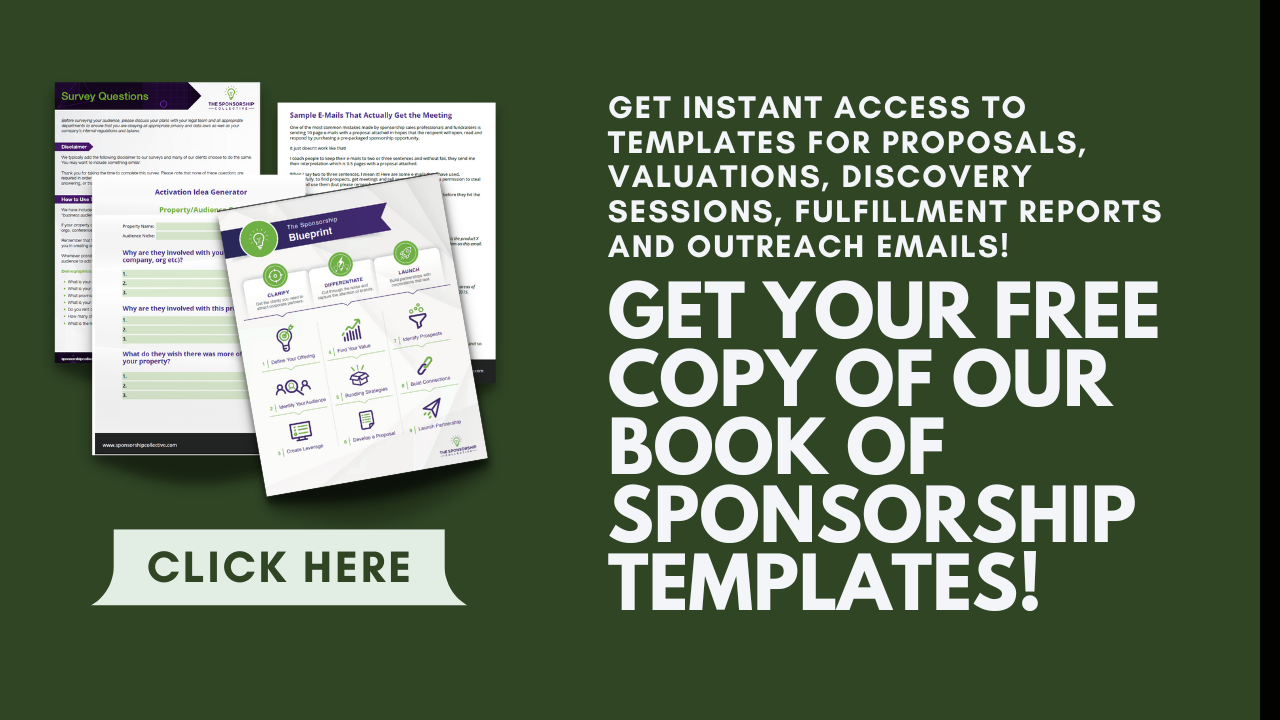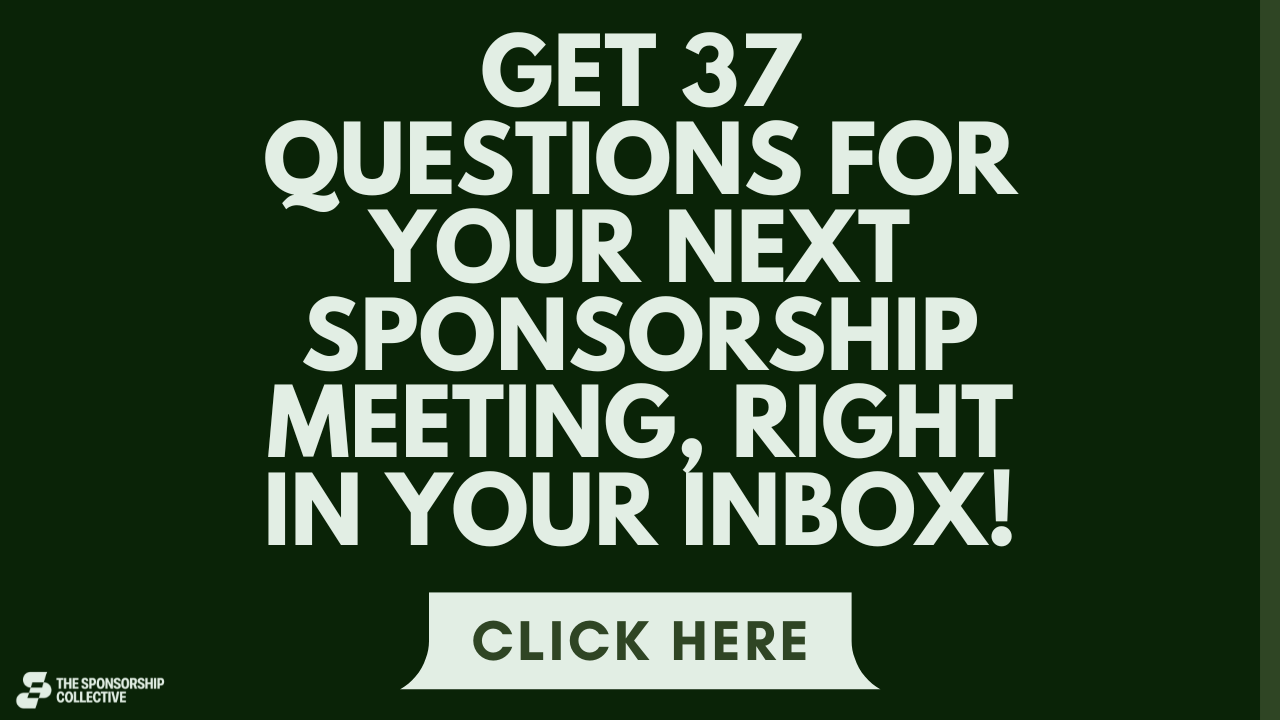How many times has something like this happened to you?
You find a prospective sponsor that you’re really excited about possibly working with. You reach out to them via phone or email, and you’re immediately told that if you’re interested in a sponsorship, you have to fill out the company’s online sponsorship form.
Hmm, okay. That wasn’t the response you were expecting, but you do it anyway. Then you never hear back.
A lot of my clients have had this issue, enough so that I’ve decided that it’s time to make a dedicated post on what to do when you’re confronted with an online sponsorship form and how to get past it.
The Tale of Two Sponsorship Clients – How to Navigate (and NOT Navigate) Online Sponsorship Forms
Rather than give you random examples of what you should or shouldn’t do when it comes to online sponsorship forms, I want to share anecdotes based on experiences with clients of mine.
In this section, I’ll go through two such stories that have some very different endings!
Client A’s Story
Let’s start with my first of the two clients, who I’ll call Client A for simplicity’s sake.
Client A had a sponsorship strategy that may sound quite familiar to some of you reading this. They would look up as many companies as they could and earmark the ones that seemed interesting based on no other criteria than that.
Then, they would find the company’s website, click on it, and fill out sponsorship forms.
Well, okay, technically Client A didn’t do that. Instead, they wrote out responses to the generic questions you see on every online sponsorship form, saved those responses in a document, and hired a bunch of high school kids to paste the responses into the right form fields and submit the form.
But either way, the forms were going out, and in very high quantities, at that.
Then, it’d be time for the waiting game. A month would pass and nothing. Another month would pass, and it’d be more of the same, still nothing. Then more time would accumulate.
In this time, Client A still had no sponsors, nor did they have any sponsorship dollars. That’s not the best position to be in.
After a few months though, a peculiar thing happened. Client A began to hear back from the prospective sponsors they had contacted through the online sponsorship forms.
Great, right? After all, many of the prospects took the time to send Client A letters. That must be promising.
All the letters pretty much read the same. In the letter, the sponsor would thank Client A for their application and their interest. Then they’d launch into how they had too many sponsorship requests and couldn’t possibly accommodate everyone.
They’d mention how they couldn’t afford at this point to sponsor Client A’s opportunity. Then they’d end the letter by saying something like, “best of luck next year.”
Perhaps you’ve received a letter like this yourself, or maybe you have a whole drawer full of them.
Client A represents a lot of sponsorship seekers, especially those who are new to things and assume that when a sponsor says something, it should be taken at face value.

Client B’s Story
Now let’s move on to Client B’s story.
Client B was looking for sponsorship dollars and the support of a sponsor just like Client A.
They decided to approach sponsorship a little differently. They didn’t send random online sponsorship forms. Instead, they compiled audience data.
They then used this data to inform their prospect research. Through that research, Client B was able to find a contact within the prospect’s company that they could reach out to directly.
So that’s exactly what Client B did. They introduced themselves, briefly mentioned their opportunity, and strove to set up a discovery meeting with the prospect.
The prospect agreed. Client B prepared discovery questions ahead of the meeting. They knew some information based on their prospect research but wanted to learn more.
Client B asked questions that would help them fill in their gaps, so to speak, and get a full picture of what the prospect company was, what it offered, and where it was struggling.
During the discovery session, Client B was able to learn about their prospect company’s target audience, what the company is trying to achieve, how the company acquires customers, and plenty of more useful information.
In the three months to follow, Client B and the prospect went back and forth to put together a customized proposal. Both parties met in person, did pitches, and ultimately agreed to work together.
They shook hands and ended the meeting. Then, as Client B was leaving, their sponsor told them something.
They said, “Oh, just one last thing. When you get back to the office, could you please go online and fill out our sponsorship request form? Put in all the information we discussed so I can rubber-stamp it, as that’s the process we use to approve new sponsorship properties.”
Of course, Client B did as they were asked and filled out the online form.
Who Approached Online Sponsorship Forms Correctly?
In both stories, Client A and Client B filled out an online sponsorship form. However, the lead-up to completing that form as well as the aftermath in the two stories were vastly different.
So who had the right approach?
That would be Client B, and I hope my telling of the two stories made that clear enough.
The success that Client B experienced in sponsorship had less to do with filling out an online sponsorship form and more to do with everything else that led up to and followed filling out the form.
Client A assumed that stock sponsorship packages and gold, silver, and bronze tiers as well as online sponsorship forms were the tickets to sponsorship.
Client B understood that while you can’t forgo filling out the online sponsorship form, nor can you skip putting together a sponsorship package, what’s most important is understanding the goals of your prospect.
From there, it’s a lot easier and more advantageous to build a custom package.

What Should You Do When a Prospect Asks You to Fill out an Online Sponsorship Form?
Whether it’s at the very beginning of the conversation or later after several meetings, it’s inevitable that your prospect will ask you to fill out an online sponsorship form. Maybe by that point, they’re less prospect and more sponsor.
How do you handle this loaded question?
Well, you should do it, but with a caveat.
Client A was 100 percent wasting their time. It didn’t matter that they had a team of high school students at the helm pressing the send button so they themselves didn’t have to fill out an online sponsorship form.
They were still wasting time. They were waiting around for months twiddling their thumbs. If they had a time-sensitive event or program, then they wouldn’t have had that much leeway. Since they didn’t, they could afford to spend the time sitting on their butts without sponsorship.
Then, when they finally heard back, it was never a positive response.
If you read my post on the best time for sponsorship, you’ll recall that I recommend the period between mid-September and mid-December only.
If you wait until after the holiday season to try to approach a sponsor, by then, the company has made all its financial decisions for the coming year and usually can’t squeeze you in.
Filling out an online sponsorship form at random like Client A was doing is oblivious to the planning that sponsor companies do. It’s assuming that because you filled out the form that the company can slot you in.
If you’ve sent five online sponsorship forms and not gotten a positive response, it’s not like the 10th time is going to be the charm. You need to stop doing what you’re doing right now and focus on another means of revenue generation for now.
Online sponsorship form submission can be a distraction in that it causes you to focus on the wrong things. You can end up more focused on guessing the right answers to the questions you’re being asked.
Instead of thinking of the online sponsorship form as the beginning of your sponsorship pitch, it should be the end instead. That’s how Client B treated it, and their sponsorship deal worked out.
They didn’t wait three months for a response and then get a letter telling them no. The sponsor wanted to receive the form from Client B, so they green-lit it immediately.
Conclusion
Some sponsorship seekers think that filling out an online sponsorship form is like a shortcut to sponsorship success. If they fill out the form well enough, then surely a company will want to work with them right away, right?
As I proved in today’s article, that’s rarely how it works. Instead, you want to start the sponsorship process with audience data, prospect research, and the discovery session.
You shouldn’t fill out an online sponsorship form before the discovery session, as you don’t know what the sponsor needs and if you can even help them that early on.
If you follow the sponsorship process correctly, your prospect will eventually ask you to submit the online sponsorship form just for their own record keeping purposes.
Only then is it a safe bet that you’ll get the kind of outcomes you’re looking for!
- About the Author
- Latest Posts
Chris Baylis is the Founder and Editor-in-Chief of The Sponsorship Collective.
After spending several years in the field as a sponsorship professional and consultant, Chris now spends his time working with clients to help them understand their audiences, build activations that sponsors want, apply market values to their assets and build strategies that drive sales.
Read More about Chris Baylis

